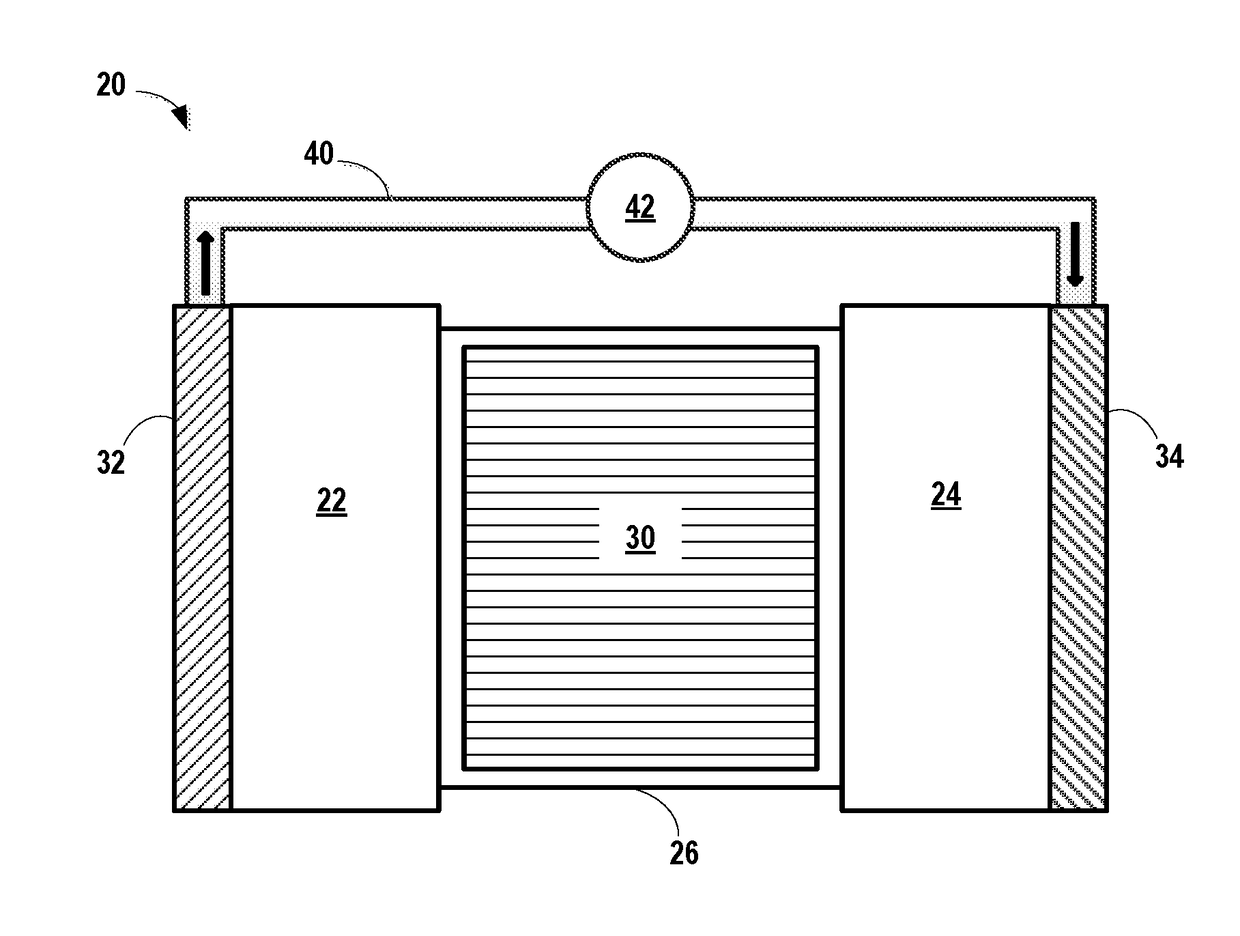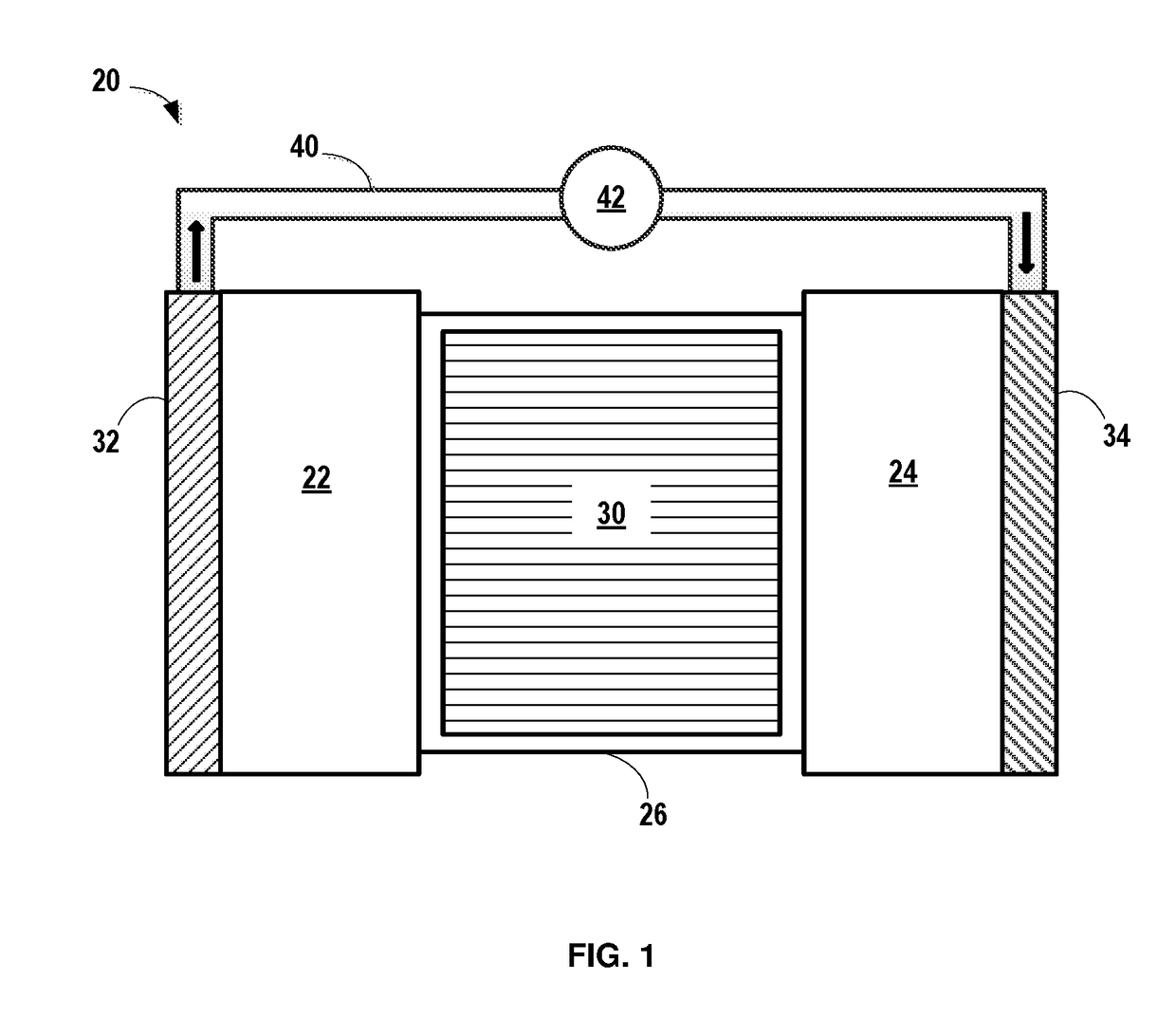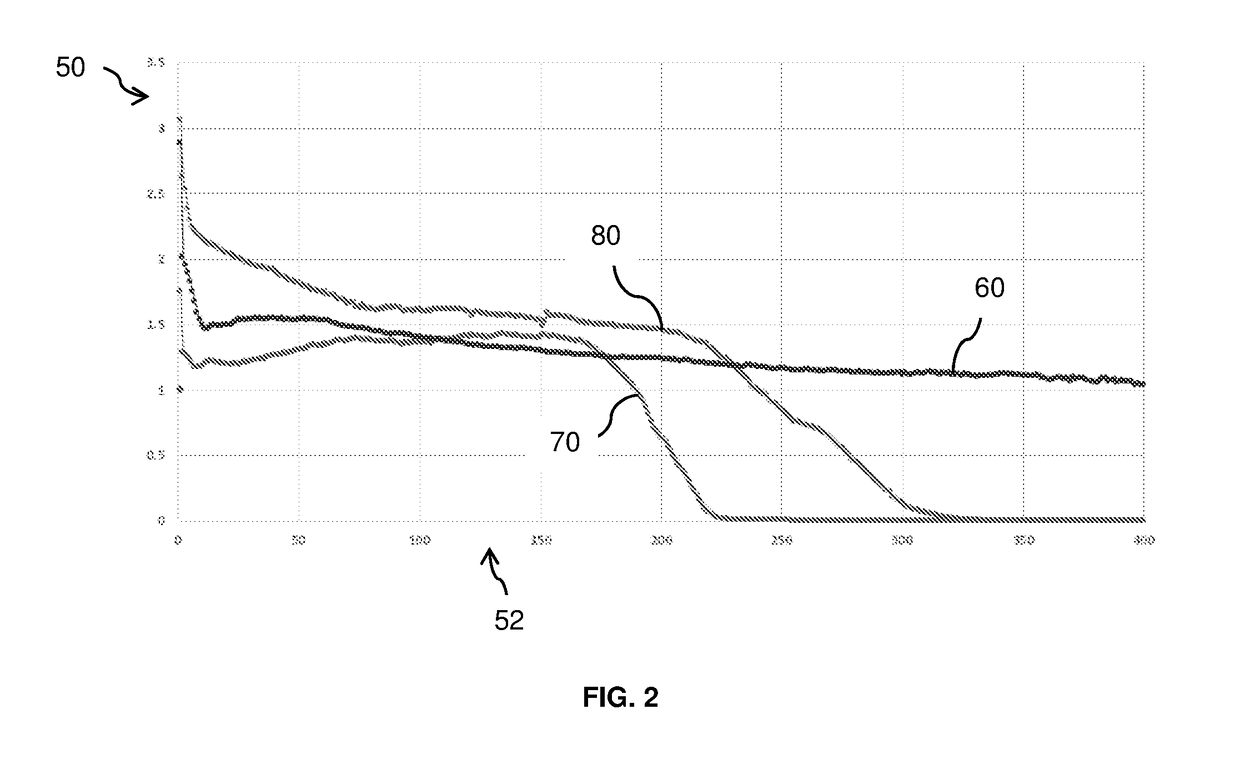Electrolyte system for silicon-containing electrodes
a technology of electrolyte system and silicon electrode, which is applied in the direction of electrolytes, cell components, organic electrolytes, etc., can solve the problems of physical damage to the anode, significant drawbacks of current anode materials comprising silicon, wrinkling, fracture, cracking, etc., to improve performance, superior long-term stability, and improved performan
- Summary
- Abstract
- Description
- Claims
- Application Information
AI Technical Summary
Benefits of technology
Problems solved by technology
Method used
Image
Examples
example 1
[0085]FIG. 2 shows the charging and discharging profiles of electrochemical cells of silicon (Si) half cells including comparative electrolyte systems. The y-axis 50 depicts the specific capacity in mAh units, while the cycle number is shown on the x-axis 52.
[0086]Electrochemical cell 60 includes an electrolyte system prepared in accordance with certain aspects of the present disclosure. In particular, the electrolyte system of electrochemical cell 60 includes 15% by mass lithium hexafluorophosphate (LiPF6) as the lithium salt and co-solvents fluoroethylene carbonate (FEC), dimethyl carbonate (DMC), and 2,2-difluoroethyl methyl carbonate (2F-EMC) in a volumetric ratio of about 1:2:2.
[0087]Electrochemical cell 70 includes an electrolyte system including lithium hexafluorophosphate (LiPF6) and co-solvents fluoroethylene carbonate (FEC), ethyl methyl carbonate (EMC), and dimethyl carbonate (DMC) in a volumetric ratio of about 1:2:2. Electrochemical cell 80 includes an electrolyte syste...
example 2
[0089]FIG. 3 shows the charging and discharging profiles of electrochemical cells based on graphite / SiOx-NMC, including comparative electrolyte systems. The y-axis 200 depicts the capacity in mAh units, while the cycle number is shown on the x-axis 202.
[0090]Electrochemical cell 220 includes an electrolyte system prepared in accordance with certain aspects of the present disclosure. In particular, the electrolyte system of electrochemical cell 220 includes lithium hexafluorophosphate (LiPF6) as the lithium salt and co-solvents fluoroethylene carbonate (FEC), dimethyl carbonate (DMC), and 2,2-difluoroethyl methyl carbonate (2F-EMC) in a volumetric ratio of about 1:2:2. The negative electrode of electrochemical cell 220 includes about 70% graphite; about 20% SiOx, where 0.5≤x≤1.5; about 2% carboxymethoxyl cellulose (CMC); about 3% styrene-butadiene rubber (SBR); and 5% carbon black.
[0091]Electrochemical cell 240 includes an electrolyte system including lithium hexafluorophosphate (LiP...
PUM
| Property | Measurement | Unit |
|---|---|---|
| thickness | aaaaa | aaaaa |
| temperature | aaaaa | aaaaa |
| electrical conductivity | aaaaa | aaaaa |
Abstract
Description
Claims
Application Information
 Login to View More
Login to View More - R&D
- Intellectual Property
- Life Sciences
- Materials
- Tech Scout
- Unparalleled Data Quality
- Higher Quality Content
- 60% Fewer Hallucinations
Browse by: Latest US Patents, China's latest patents, Technical Efficacy Thesaurus, Application Domain, Technology Topic, Popular Technical Reports.
© 2025 PatSnap. All rights reserved.Legal|Privacy policy|Modern Slavery Act Transparency Statement|Sitemap|About US| Contact US: help@patsnap.com



